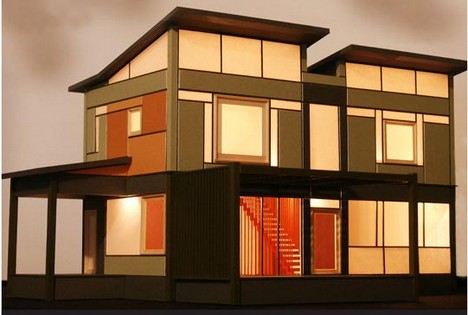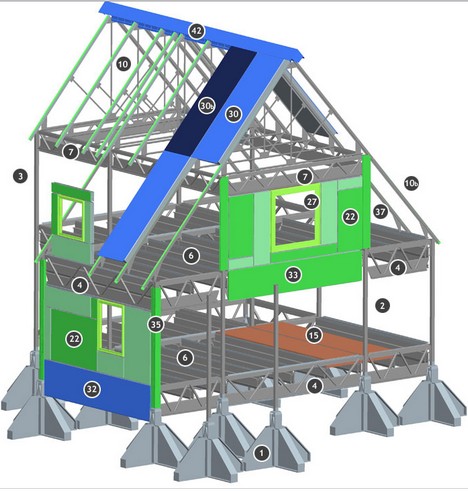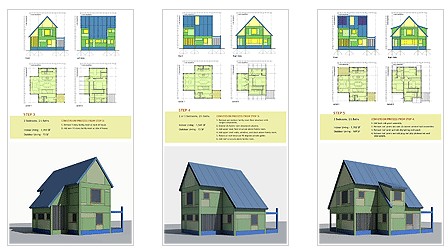
It is an ingenious and very well resolved idea for revolutionizing the way we build houses, breaking it down into components that snap together much like an office system.
Over at Materialicious, architect Greg La Vardera (Treehugger here) has deconstructed it brilliantly:

Greg concludes:
"I think it is tremendously clever, and has the characteristics of a truly disruptive technology. It has the potential to change radically the way we build houses. Its scalable, because the required components could be made by any number of manufacturers given they agree to work to the standardized joint designs. No new technology is needed, just the market for existing manufacturers to build to the standards. It changes the consumers relationship to the house, as its now something that you can easily expand for more space, rather than relocate yourself....That is what has the potential to disrupt the market. Gone are all the layers of house construction, replaced by large integrally finished parts that you can simply snap together."

"The strong idea running through all of this is that it fundamentally changes the consumer’s relationship with the house. Its no longer a static investment. It can be purchased in the usual way, but it can also be easily purchased in parts that gets you to the same house. It turns the house into a product in a tactile way that other prefabrication techniques do not. It stands to alter the consumer’s experience at every step of ownership. I think that this is a prefab product that could really deliver all the potential that the recent prefab fad has promised."



![A Tranquil Jungle House That Incorporates Japanese Ethos [Video]](https://asean2.ainewslabs.com/images/22/08/b-2ennetkmmnn_t.jpg)









